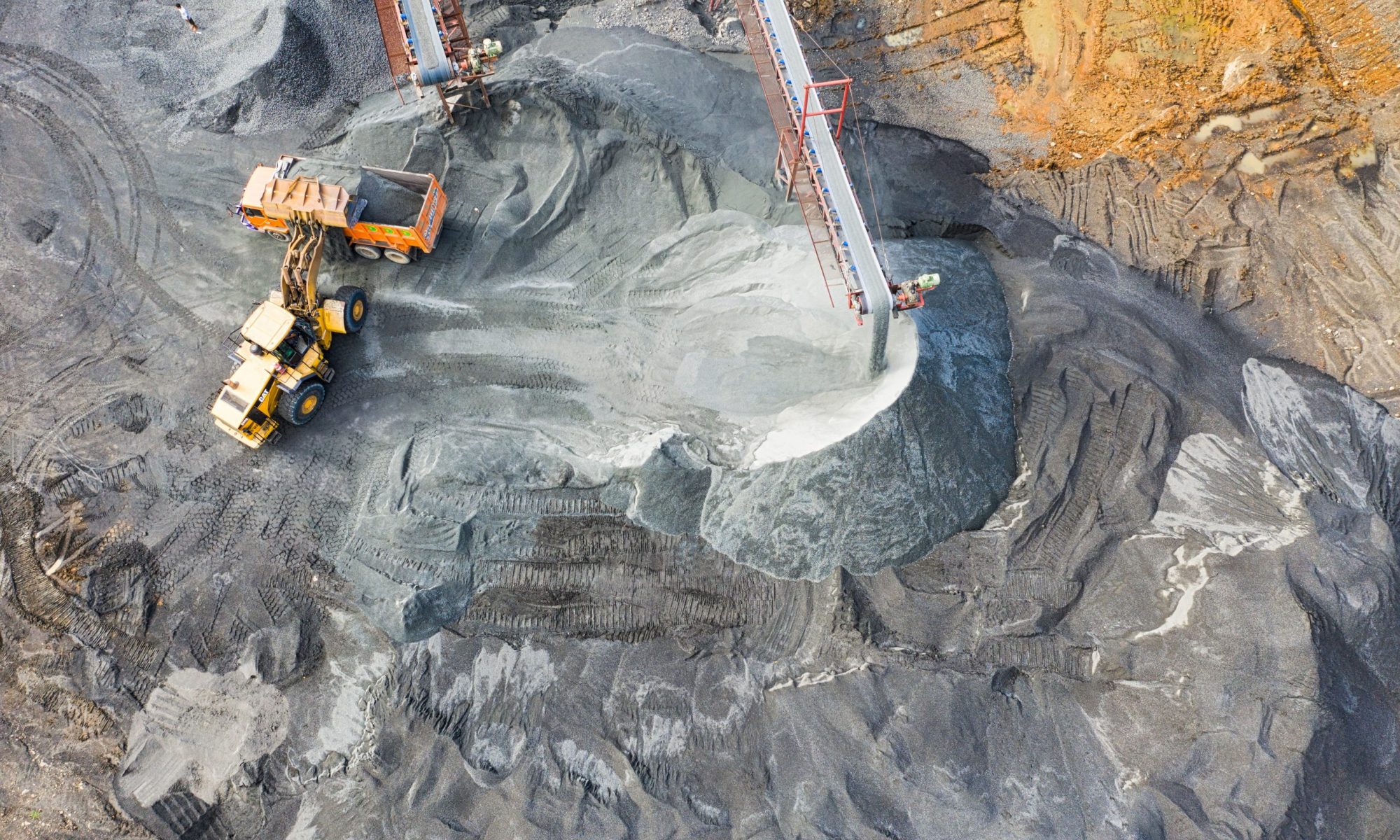The winners of mining in our unequal world system
Text by Pauliina Forsman & Varpu Savolainen
According to Dorninger et al. (2021) the world’s overall resource flows are more and more directed to the world’s so-called “core areas” meaning rich countries and cities in them. When we, as a group, think of the lifestyle these rich i.e. Western cities currently represent, words such as consumption, materialism and technology come to our minds. When examining strategies of cities in Finland (map below) it seems clear that almost without an exception cities pursue carbon neutrality by trusting smart solutions – innovations and practices that run on new technologies. So-called Smart Cities, where technological solutions are harnessed to produce efficiency and improve the quality of life of their citizens (Bibri & Krogstie 2017), seem to be seen as one of the main solutions for Western urban areas to fight against climate change. What the strategies do not seem to take into consideration, is the consequences of their systematic digitalization targets in the peripheral regions of the world that provide the materials for the smart solutions.

The level 3 cities on the above map, Helsinki, Turku and Tampere, seem to hold digitalization as an intrinsic value (Helsingin kaupunki, 2021; www.smarttampere.fi; www.turku.fi/projekti/smart-and-wise-turku). Based on our interpretation of the strategies, pioneering in the use of digitalization will supposedly increase international attractivity and provide a simple solution to aim for carbon neutrality. What often seems to be forgotten is the emissions that digitalization causes: the use of batteries, transportation, production and mining of the minerals all demand energy. When calculating the carbon footprint of an actor e.g. city, are all of these steps taken into consideration? We have our doubts on whether the cities are even able to cover each detail in the complex web of actions and functions that they consist of when making the calculations. The root causes of smart city initiatives and strategies seem to have strong linkages to the UNSDGs 11 (sustainable cities and communities) and 13 (climate actions), but we want to raise a question on whether the pressing urge to adopt the newest technologies is really the most sustainable way. Smart and sustainable have become a word pair that seem to intertwine without question, but as can be understood from the research done for this blog (e.g. the publications by Niina Asikanius and Eemi Saarinen) and on the literature review made by Bibri and Krogstie (2017) the relationship of smart and sustainable is not self-evident.

The UN report (2015a) says that 66% of the world’s population will live in urban areas by 2050. Therefore, the overall influence and environmental impacts of cities will grow and become more central when discussing the world’s resource carrying capacity and climate actions. We believe that it is logical and justified to identify the impacts of cities in the debate of climate change and adequacy of natural resources. Especially when looking at the use of minerals, people in Western cities seem to be the winners, who enjoy the commodities, such as technology, made possible by natural resources from rural mines, but who do not themselves have to face the negative effects of mining activities for the environment and local communities, and who also rather would shift the responsibility to others for example via offset projects.
World history shows that achieving large-scale prosperity has without an exception happened at someone else’s expense. Over and over again nations and groups of people have been oppressed into slavery to produce goods and prosperity for others. Unfortunately the unequal set of our world system has not yet reached its end, but rather the forms of exploitation only have changed. From a geographical point of view there is a hierarchical system in the world in which some places and economies are more important to the world system than the others. This so-called center-periphery structure means that some core areas and key players in the world own relative power over others. (Frank & Gills, 2000). This structure is very well seen in the production and use of minerals. According to Dorninger et al. (2021; Jorgenson and Kick, 2003; Wallerstein, 1974) “economic growth and technological progress in core areas of the world system occurs at the expense of the peripheries”. Mining activities are often geographically located in rural areas, where poverty and widespread problems are already abundant, when the true beneficiaries are living somewhere else.
In order to achieve European Union’s climate neutrality by 2050 goal, we desperately need a transition away from fossil fuels to renewable energy (Green deal, 2020). The transition, however, involves high risks of increasing social inequality and environmental crisis since most of the key materials for green technology transition are located in the Global South. Therefore, many of the world’s weakest societies are targets of a new scramble for resources, and may become victims of new forms of colonisation. (Tillerson, 2020).

The world economic structure is based on growth and therefore demand for energy will rapidly grow in the near future. Like Kurjenpuu very well opens, in order to prevent climate change we must pursue a fast transition to renewable energy. Tillerson, however, (2020) very strongly argues that if we want the energy transition to be ecologically sustainable, socially just and technologically realizable, we cannot keep on growing our energy demand at existing rates. “Even after achieving a full energy transition, to keep the global economy growing at projected rates would mean doubling the total global stock of solar panels, wind turbines and batteries every thirty or forty years, for ever”. While implementing the well needed green energy transition, we must actively pursue ways of cutting down the overall need for natural resources. This, according to Hickel, needs the reorganization of capitalist market economy models and questioning our own consuming habits. Like Greta Thunberg (2020) says: “we cannot save the world by playing by the rules. Because the rules have to be changed.” Are we ready to cut down our need for material and lower our overall living standards?
References
Berger, M. Hiilineutraali Vantaa 2030. Selvitys tarvittavista lisätoimenpiteistä. Retrieved on 26.4.2021 from https://www.vantaa.fi/instancedata/prime_product_julkaisu/vantaa/embeds/vantaawwwstructure/138291_Hiilineutraali_Vantaa_2030_-selvitys.pdf
Bibri, S. E., & Krogstie, J. (2017). Smart sustainable cities of the future: An extensive interdisciplinary literature review. Sustainable cities and society, 31, 183-212.
Espoo. (2017). Espoo-tarina. https://www.espoo.fi/fi-FI/Espoon_kaupunki/Paatoksenteko/Espootarina.
European Union (2020). Green Deal: Sustainable batteries for a circular and climate neutral economy. https://ec.europa.eu/commission/presscorner/detail/en/ip_20_2312
Frank, A. G., Gills, B., & Gills, B. K. (Eds.). (1996). The world system: five hundred years or five thousand?. Psychology Press.
Helsingin kaupunki. Maailman toimivin kaupunki – Helsingin kaupunkistrategia 2017–2021. Retrieved on 26.4.2021 from https://www.hel.fi/helsinki/fi/kaupunki-ja-hallinto/strategia-ja-talous/kaupunkistrategia/strategia-ehdotus/.
Jyväskylän kaupunki. (2017). Kaupunkistrategia. Read on 26.4.2021 on https://www.jyvaskyla.fi/kaupunkistrategia.
Oulun Kaupunginvaltuusto. (2018). Valovoimainen Oulu. Kaupunkistrategia 2026. https://www.ouka.fi/documents/52058/17394318/KaupunkistrategiaOulu2026+final.pdf/8426ea0a-4a9b-40ad-9ab4-2c3988125262.
Thunberg, G. (2020) Pathways to a Post-Capitalist Word. in: Hickel, J. (2020). Less is more: How degrowth will save the world. Random House.
Tillerson, R. (2020) Will Technology save us? in: Hickel, J. (2020). Less is more: How degrowth will save the world. Random House.
United Nations (2015a). World urbanization prospects. The 2014 revision. New York: Department of Economic and Social Affairs http://esa.un.org/unpd/wup/Publications/ Files/WUP2014-Report.pdf
Vantaa. (Elinvoima- ja vetovoimaohjelma 2019–2021. Retrieved on 26.4.2021 from https://www.vantaa.fi/instancedata/prime_product_julkaisu/vantaa/embeds/vantaawwwstructure/145756_elinvoimaohjelma_2019.pdf
Fighting against the effects of climate change within the mining industry
Text by Kiia Eerikäinen
Inspecting climate change through the lens of mining companies, possible positive linkages are not the first to come to our mind. Increasing pressure on climate-wise technologies would result in a boom of mineral demand, up to 10 fold by 2050 according to Hodgkings & Smith (2018). It however does not erase the fact that the industry has much room for climate-wise options and possibility to influence changes, which is a topic worth to briefly touch upon in the context of this debate.
Mining companies for one are prominently up-to-date with variations in climate, for much of the industry is situated and operating in extreme environments, has a strong dependency on water resources and is constantly trying to predict a response to the shifting demand of minerals. Energy efficiency, securing water resources and a shift away from fossil fuels is what a major part of the industry is hoping to accomplish, but as according to Bour et al. (2020) the ones gaining a true advantage in the industry are the ones efficiently investing in a list of three priorities; developing a climate-conscious business strategy, climate proofing the operations and centralizing climate change as an agenda within the business. An important side note to this would be that by addressing the issues mining companies are in reality also protecting and creating value on their own assets by investing in a variety of adaptation practices proposed by experts of the field.

Mining industry has a potential for a full decarbonization and on some level minerals are able to decarbonize their operations, but it would require significant capital investments, operational efficiency, use of renewable energy and electrification – of which the latter ones in today’s world are in fact fairly accessible for many of the operating mines. As an example, in Henderson and Maksimainen’s (2020) article it is estimated that the cost of battery packs is going to go down by a half from 2017 to 2030, making use of renewable energy fairly applicable even for smaller scale mines. The use of solar power and other kinds of renewable energy sources are already put into use in certain mines. As an example a multinational mining company BHP has stated that by mid-2020’s, it will have its huge Chilean mine use 100 percent renewable energy sources to meet its power needs, according to Parkinson (2019). By doing so the company is not only making environmental-friendly business solutions but also creating social acceptance in the area in terms of mining, as it is also publicly striving towards Chile’s “Energia 2050” policy, which is targeting to make 70 percent of Chile’s energy to come from renewable energy sources by 2050 (Ministerio de Energía, 2015).
Globally for the mining industry to pursue the targets set by the SDG’s, the supply chains need to find well-balanced solutions for adaptation and mitigation, to answer the increasing demand for rare metals and minerals while also crucially striving towards decarbonization.
A few brief examples from Hodgkinson & Smith (2018) lists how the mining companies could also potentially benefit from the changes:
- The improvements in energy efficiency greatly reduces operational costs and improves energy security
- Makes companies and mines economically and physically less exposed to climatic conditions and extreme weather events
- Potential policy changes and improved governance has the power to influence innovations, research and development, secure increasing support from communities, encourage recycling and the use of renewables.
While much of the positive linkages between mining and climate change in reality remain far in the background in the face of the much more negative effects, there is still room for change from the “business-as-usual” way of thinking. Much more efficient actions within the industry are well needed in terms of climate change and in addition to policies and stricter governance it remains with the companies to develop their operations and solve the issues with the help of many frameworks and solutions available. With the increasing social opposition, policy changes, economically through vigilant grown investors and physically due to extreme weather events, the mining sector is obligated to feel the pressure to tackle the issues sooner or later. This, as previously mentioned, will lead to the “winners” and “losers” of the industry, depending on how the companies are able to prepare for the changes.
References
Hodgkinson, J. H., & Smith, M. H. (2018). Climate change and sustainability as drivers for the next mining and metals boom: The need for climate-smart mining and recycling. Resources Policy,101205. doi:10.1016/j.resourpol.2018.05.016.
Bour, A., Chaumontet, L., Feth, M., Kuipers, H., & Möncks, T. (2021). Mining Needs to Go Faster on Climate. https://www.bcg.com/publications/2020/mining-needs-to-go-faster-on-climate
Henderson, K. & Maksimainen, J. (2020). Here’s how the mining industry can respond to climate change. McKinsey & Company. https://www.mckinsey.com/business-functions/sustainability/our-insights/sustainability-blog/here-is-how-the-mining-industry-can-respond-to-climate-change
Parkinson, G. (2019). BHP cancels coal contracts, goes 100 per cent renewables at huge Chile copper mines. https://reneweconomy.com.au/bhp-cancels-coal-contracts-goes-100-per-cent-renewables-at-huge-chile-copper-mines-57884/
Ministerio de Energía de Chile (2015). Hoja de Ruta 2050: Hacia una Energía Susentable e Inclusica para Chile. September 2015, Santiago, Chile. http://www.energia.gob.cl/sites/default/files/hoja_de_ruta_cc_e2050.pdf.
Positive impacts of mines on local communities
Text by Kiia Lempinen
Although mining has several negative effects that conflict with the SDG targets, mining also brings benefits to the mining area and its immediate proximity. The opening of mines will bring infrastructure, attract experts and increase the number of jobs in the area and therefore improve the position of women and lift families out of poverty.
When considering possible positive effects in addition to mining, the infrastructure that enables operations is often the first to come to mind. Based on literature, (Williams et al. 2020) mining activities may attract state and local governments to expand their services especially by improving the public facilities that can increase investment or business opportunities. Adequate infrastructure and better transport connectivity tend to improve productivity, economic growth, and sustainability (Williams et al. 2020, 1126).

In addition to the road network, the possibility of using electricity and the internet are also an important part of the developments of public facilities and households. Electricity has a significant role to play in achieving development as its provision improves the ability to meet basic needs such as health, education, food, and water (Haselip et al. 2004). The internet, on the other hand, provides significant cost savings to various businesses, resulting in lower prices to consumers and faster economic growth (Williams et al. 2020, 1126).
Another effect of mining activities can be through the housing sector. The mining sector requires skilled labour and according to literature (William et al. 2020, 1117), it is unlikely to be satisfied fully by the residential workforce in the region. On the positive side, native populations in mining districts do have a larger share of salaried workers than native populations in non-mining districts. These results suggest that the better average outcomes enjoyed by producing districts are explained by the better educated immigrants that mining activities require and attract (Loyaza et al. 2016, 220). Since a large percentage of mining workers is transient, the demand for rented dwellings will increase more than for purchased or owned ones. Of course, the higher housing costs benefit only a certain group of households (Williams et al. 2020, 1117).
An important factor justifying the mining industry is, of course, economic growth and the fight against poverty. According to literature on the mining industry in Peru (Loyaza et al. 2016), districts with mining activities have about 9% larger consumption per capita and 2.6% less poor and extreme poor population than non-mining districts (Loyaza et al. 2016, 225). Similar, although weaker, results can also be found in Western countries such as the mining areas in Australia. Based on the results presented in the literature, 1% increase in coal employment will reduce the share of low-income families out of total families in the region by 0.06% points and will reduce the share of children below 15 years old in jobless families by 0.03% points (Williams et al. 2020, 1124).
It is widely known that studying or working outside the household improves the position of women and children. It has been found that coal mining activities positively impact the non-mining employment growth (Williams et al. 2020, 1122) and that the labour market opportunities for women change with mining. Before the mine starts producing, women are more likely to work as self-employed agricultural workers which is seasonal by nature and oftentimes paid in kind. Once the mines open and service employment increases rapidly, women move more to cash-based, year-around, or occasional sectors such as services (Kotsadam et al. 2016, 335). Mining activities positively impact the number of people who work in a female-dominated health and social sector, for instance (Williams et al., 2020). Mining also influences other local industries creating employment multipliers that increase employment in unrelated industries through the income spent locally by coal workers (Betz et al. 2015, 113).
References
Betz, M. R., Partridge, M. D., Farren, M., & Lobao, L. (2015). Coal mining, economic development, and the natural resources curse. Energy Economics, 50, 105-116.
Haselip, J., & Hilson, G. (2005). Winners and losers from industry reforms in the developing world: experiences from the electricity and mining sectors. Resources Policy, 30(2), 87-100.
Kotsadam, A., & Tolonen, A. (2016). African mining, gender, and local employment. World Development, 83, 325-339.
Loayza, N. & Rigolini, J. (2016). The Local Impact of Mining on Poverty and Inequality: Evidence from the Commodity Boom in Peru. World development, 84, 219-234.
Williams, G. & Nikijuluw, R. (2020). The economic and social benefit of coal mining: the case of regional Queensland. The Australian Journal of Agricultural and Resource Economics, 64(4), 1113-1132.
